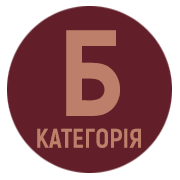LINGUISTIC RESEARCH OF THE INTERNET LANGUAGE
DOI:
https://doi.org/10.24919/2522-4565.2021.48.3Keywords:
digital discourse, Internet communication, Internet discourse, Internet language, Internet text, linguisticsAbstract
Internet language is a new type of linguistic discourse developed together with a global system of Internet communication, which is the most popular and widely available network since individuals of any age, education, religion, political views, country of residence can participate in the speech interaction. The goal of modern linguistics is to study Internet discourse as a dynamic social phenomenon and to systematize the received results. The number of interdisciplinary publications devoted to the Internet language has increased and the main spheres of their interests are specified in the paper. The properties of Internet discourse have been described and the main written and oral text characteristics of the digital texts were specified. For identical printed text placed in the net characteristics change due to the different hypertext links. They become a part of other messages, which is identified by search engines via some keywords, terminology, so the text can become part of another text or be complemented with audio-/visual information, etc. In this paper, the key determinants and specific classification of the Internet text individualized linguistic parameters are regarded as a vital characteristic for a personal language portrait of an individual Internet user identification. The paper draws attention to the fact that different aspects of written and oral message style analysis and text organization reflect personal characteristics. The specifications of chat and social networks language reflexivity and emotional responses conveying traditional meanings are distinctive features of Internet communication. The Internet language is a complex combination of different discourses and the development of an Internet texts analysis is the most important task of modern linguistics, which greatly contributes to the the development of the practical method of Internet discourse analysis.
References
Baron, N. S. Language and the Internet. In A. Farghali (Ed.), The Stanford handbook for language engineers. Stanford : 2003. 59-127 p.
Crystal D. Internet Linguistics: A Student Guide. 2011.
Danet B., Herring S. C., The multilingual Internet: Language, culture, and communication online. Oxford University Press on Demand, 2007.
Herring S. C. A faceted classification scheme for computer-mediated discourse. Language@ internet. 2007. Vol. 4(1).
Herring S. C. Language and the Internet. The concise encyclopedia of communication. Oxford, UK: Wiley-Blackwell, 2008.
Herring S. C. Discourse in Web 2.0: Familiar, reconfigured, and emergent. 2013. P. 1-26.
Herring S. C. New frontiers in interactive multimodal communication. In The Routledge handbook of languageand digital communication. London: Routledge, 2015. P. 412-416.
Herring S. C. The co-evolution of computer-mediated communication and computer-mediated discourse analysis. In Analysing digital discourse: New insights and future directions. London: Palgrave Macmillan, 2019, P. 25-67.
Jucker A. H., Dürscheid C. The Linguistics of Keyboard-to-screen Communication: A new terminological framework. Linguistik Online. 2012. No. 56(6/12). P. 1-26.
Locher M. A. Electronic discourse. In Pragmatics of discourse. De Gruyter Mouton, 2014. P. 555-582 p.
Kortmann B. English linguistics: essentials. JB Metzler, 2020.



